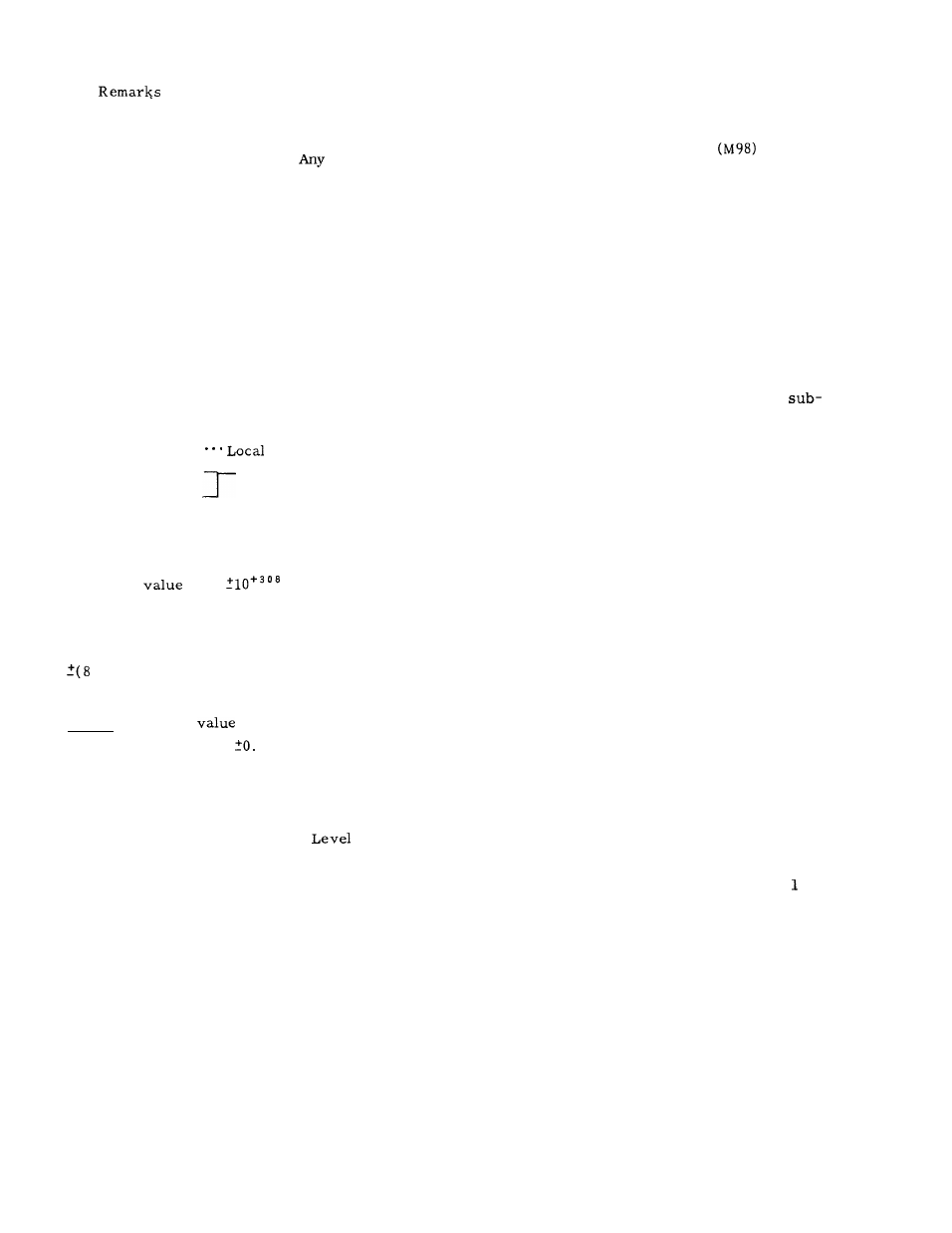Yaskawa J50M Instructions User Manual
Page 121

B .
a.
Common variables can always be changed.
b. Local variables can not be written at any time other
than when a macro is in execution.
attempt to do so
is invalidated.
However, rewriting of local variables
during macro execution may cause an unexpected
failure.
Before attempting the rewriting, stop the
machine operation by single stop function and check to
see if it is safe to rewrite variables.
c. The written local variables and common variables
#100 through # 149 are reset to “blank” by the reset
operation or the power-on operation.
2.11.10 CONSIDERATIONS AND REMARKS FOR
USER MACROS
(1) Summary of Restrictions
A .
Available Variables
# 1 t h r o u g h # 3 3
v a r i a b l e s .
#100 through #149
Common variables.
#500 through #559
System variables
B .
Available Variable Values
Maximum
. . .
Minimum value . . .
*
1 0
- 308
c.
Constant Values Usable in < Expression>
digits above decimal point) . ( 7 digits below
decimal points) .
Sample
Maximum
399999999.9999999
Minimum value
0000001
D.
Operational Accuracy
Decimal 15 digits significant.
E.
Macro Call Maximum Nesting
Quadruple (four-hold) .
F.
Maximum Nesting Level of Repeat Command
Triple (three-hold) for each macro.
G.
Repeat Command (DO) Identifier m
m = 1, 2, and 3.
(2)
Differences Between User Macro and
S u b p r o g r a m
A .
User macros G65 and G66 allow argument
designation but the subprogram
does not.
B.
The user macro directly branches to the
user macro body without executing any command
that was specified in G65 or G66 block and has
no relationship with the macro.
With the sub-
program, however, a branch is performed after
the execution of the command (if any) other than
P and L in M98 block.
c.
The maximum nesting level of user macro is
quadruple including G 65 and G 66 calls. That of
subprograms is also quadruple but separately.
D .
If user macros are specified via the MDI
during automatic operation, the maximum nest-
ing level is restricted to quadruple. With
programs, up to four levels of nesting are per-
mitted in tape mode or memory mode, or separately
in MDI mode.
(3)
Relationship with MD I Operation
A .
MDI writing permits the macro call and the
execution of the called macro.
B.
MDI writing does not permit or execute macro
body commands such as operational commands and
control commands.
C. When a macro program being executed is stopped by
the single block stop function, any MDI writing command
not related to the macro can be specified and executed.
(4) Relationship with Address Search
The address search function is not permitted to
search for the sequence numbers in the user
macro body.
(5)
Relationship with single
B l o c k S w i t c h
A .
The operational command and control com-
mand blocks do not single-block stop if the
single block switch is turned on.
This switch
is enabled for the other macro program blocks.
B .
However, when setting number #6004D = 1,
the single block switch is enabled for the opera-
tional command and control command.
C. System variable #3003 (for the control of single block
stop, see para. 2.11.5, F on page 103) and setting #6004
D 1 mentioned above operate as shown below :
H.
Maximum Nesting Level of Brackets
Quintuple ( five-hold) .
113
